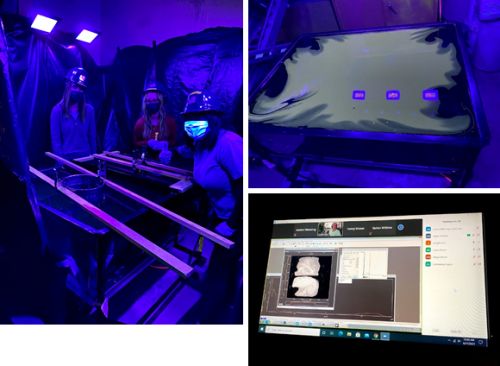OR&R Collaborates on Oil Spill Research
JUNE 21, 2021 ─ This week, Lisa DiPinto, OR&R’s senior scientist is working with the Coastal Response Research Center (CRRC), the EPA Office of Research and Development, and Johns Hopkins University to advance our ability to characterize surface oil slicks.

The project is testing our ability to use an electron multiplying charged coupling device (EMCCD) camera to measure the intensity of oil fluorescence from a surface slick to determine the slick thickness. Understanding how thick an oil slick is helps responders and damage assessment teams determine how much oil is on the surface, the oil’s fate and transport, including how much mixes into the water column, and how it can affect sensitive resources. This project also introduced undergraduates from the University of Puerto Rico, the University of New Hampshire and Gustavus Adolphus College as part of a University of New Hampshire diversity enhancement program.
For more information, contact Lisa.DiPinto@noaa.gov.
 An official website of the United States government.
An official website of the United States government.
